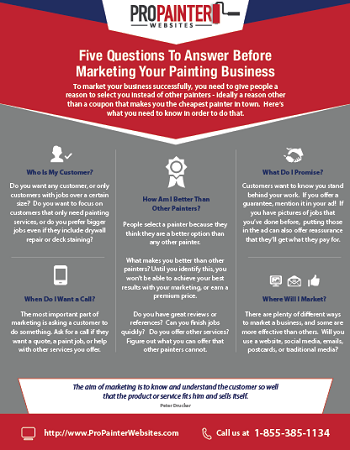Discover The Ways In Which Seasonal Aspects Can Affect The Success Of Industrial External Paint And Figure Out The Most Effective Times To Achieve Long-Term Results For Your Job
Discover The Ways In Which Seasonal Aspects Can Affect The Success Of Industrial External Paint And Figure Out The Most Effective Times To Achieve Long-Term Results For Your Job
Blog Article
Authored By-Carlson Rodriquez
When you're preparing a commercial outside painting project, seasonal aspects can make or break your results. You'll wish to think about how temperature and humidity impact paint application and drying out times. Selecting window paint for business can ensure your paint sticks correctly and lasts much longer. Yet which seasons are absolutely the very best for this kind of job? Allow's discover the crucial elements that can influence your task's success.
The Effect of Temperature on Paint Application
When you're preparing a commercial outside paint job, the temperature level can considerably impact how well the paint adheres and dries out.
Ideally, you intend to paint when temperatures vary between 50 ° F and 85 ° F. If it's also chilly, the paint might not cure effectively, bring about issues like peeling or cracking.
On the other side, if it's also hot, the paint can dry too promptly, preventing appropriate bond and causing an uneven finish.
You need to likewise consider the moment of day; early morning or late afternoon offers cooler temperatures, which can be a lot more beneficial.
Constantly inspect the producer's suggestions for the details paint you're using, as they usually offer guidance on the optimal temperature level array for optimal results.
Moisture and Its Impact on Drying Times
Temperature level isn't the only environmental aspect that influences your industrial outside paint task; moisture plays a substantial function as well. High moisture levels can reduce drying out times significantly, affecting the general top quality of your paint work.
When the air is saturated with dampness, the paint takes longer to treat, which can cause concerns like inadequate adhesion and a higher danger of mold development. If you're repainting on a particularly humid day, be planned for extensive delay times in between layers.
It's crucial to monitor regional weather and plan appropriately. Preferably, aim for humidity levels in between 40% and 70% for ideal drying.
Keeping these consider mind guarantees your project remains on track and delivers a lasting surface.
Best Seasons for Commercial Exterior Paint Projects
What's the best season for your commercial external painting projects?
Spring and very early fall are usually your best choices. During these seasons, temperatures are light, and humidity degrees are commonly reduced, creating optimal problems for paint application and drying.
Prevent summer's intense heat, which can cause paint to dry too swiftly, bring about poor bond and coating. In a similar way, wintertime's cold temperature levels can hinder proper drying and healing, taking the chance of the durability of your paint task.
Aim for days with temperatures between 50 ° F and 85 ° F for optimal results. https://www.homesandgardens.com/house-design/how-much-does-it-cost-to-paint-a-house in mind to inspect the regional weather report for rain, as damp problems can wreck your project.
Planning around these variables guarantees your paint project runs smoothly and lasts much longer.
Conclusion
In conclusion, intending your industrial exterior paint projects around seasonal factors to consider can make a substantial distinction in the end result. By organizing work throughout the ideal temperature levels and moisture levels, you'll make certain much better adhesion and drying out times. Remember to keep an eye on neighborhood weather report and select the correct time of year-- spring and very early autumn are your best bets. Taking these actions will aid you accomplish a sturdy and professional coating that lasts.
